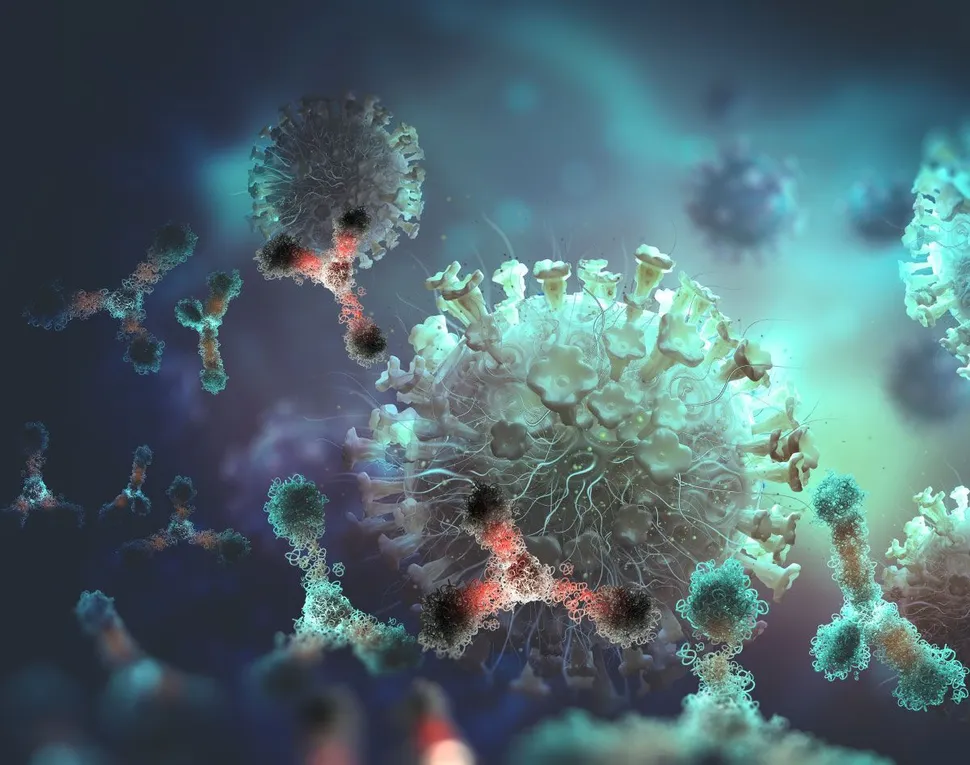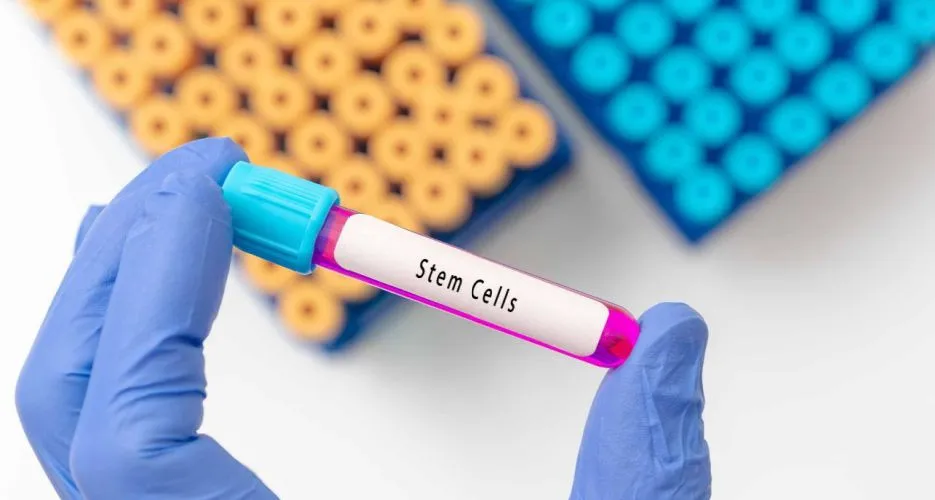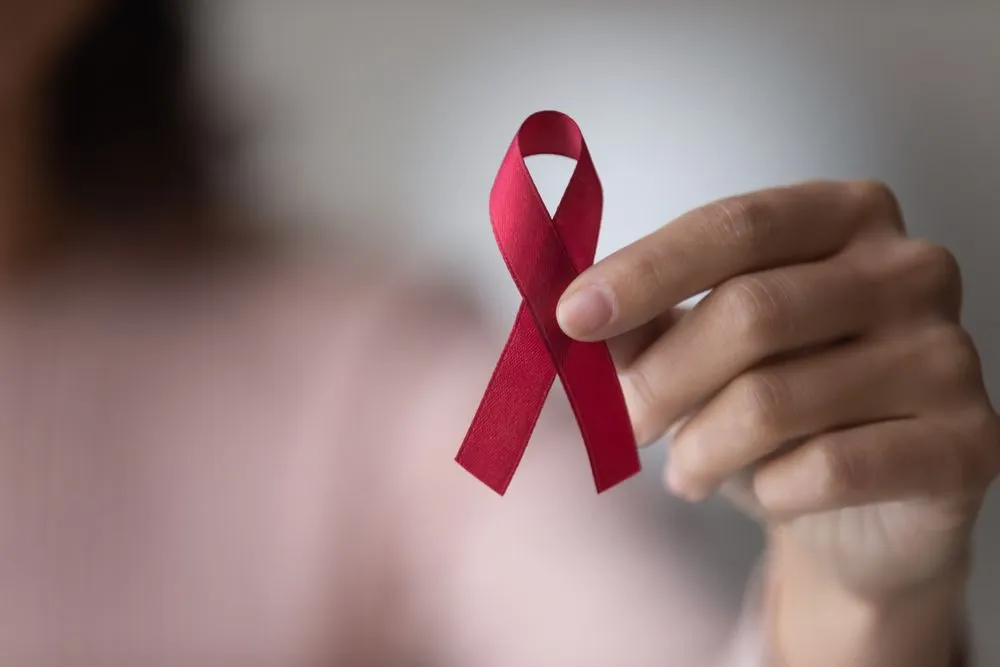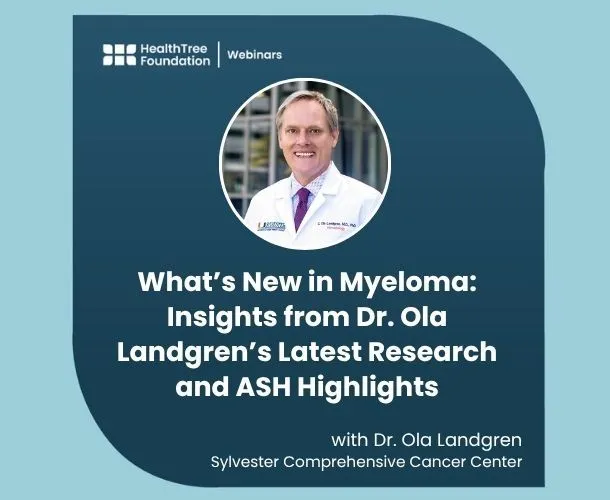Multiple Myeloma Bispecific Antibody Talquetamab Update

Johnson and Johnson/Janssen (JNJ) is almost overwhelming us, myeloma patients, with results from a substantive number of human trials in myeloma patients.
Over the past week we have seen data from five studies of teclistamab (recently discussed here), long-term follow-up results of their CAR-T product Carvykti and now we can add early results of their novel treatment talquetamab. All of this builds on their success with both Darzalex and Darzalex Faspro.
Talquetamab is a ‘first in class’ bispecific antibody that targets the GPRC5D, a new target expressed on myeloma cells, and CD3, a protein expressed on T-cells. GPRC5D has limited expression on healthy human tissue but is highly expressed on malignant myeloma cells.
This construct brings the killing T-cell in contact with the cancerous cell. JNJ has presented Phase I data with both mono treatment with talquetamab and combination treatment with talquetamab + Darzalex Faspro. Please remember that a Phase I study evaluates safety, preliminary efficacy as well as recommended Phase II dosing (RP2D) for follow-on human studies to support the registration dossiers with regulatory agencies in the future.
Talquetamab as monotherapy
Two dosing levels were identified: 405 and 800 micrograms/kg (μg/kg body weight). Patients were stepped-up gradually to the target dose in order to mitigate severe cytokine release syndrome (CRS) and required pre-medications were administered during this step-up period.
Nearly all of the patients had been triple class exposed prior to relapse, about 75 percent. Results from these sub-programs can be summarized as follows:
|
405 μg/kg (30 patients) |
800 μg/kg (44 patients) |
|
|
Patient characteristics |
|
|
|
Triple class exposed Triple class refractory Penta drug exposed Penta drug refractory Prior BCMA directed treatment |
100% 77% 80% 20% 30% |
98% 77% 68 % 27% 27% |
| Overall Response Rate (ORR) | ||
|
All patients Triple class refractory Penta class refractory |
70% 65% 83% |
64% 68% 75% |
| Median Follow-Up Time |
13.2 months |
7.7 months |
| Patients with a Response | ||
|
Very good partial response or better (VGPR) Complete response or better (CR) Stringent complete response (sCR) |
57 % 7 % 23 % |
57 % 11 % 9 % |
| Median Duration of Response | 10.2 months | 13 months |
| Most Common Adverse Events | 77% | 79% |
|
Cytokine release syndrome (CRS) Neutropenia Skin-related adverse events Loss of taste Infections |
67 % 67 % 63 % 47 % |
Not reported 73 % 57 % 39 % |
Combo treatment talquetamab + Darzalex Faspro
A total of 58 patients were treated (14 with a talquetamab dose of 405 μg/kg and 44 with a dose of 800 μg/kg). Darzalex Faspro was dosed at the approved dosing level. Results can be summarized as follows:
|
|
405 μg (14 patients) |
800 μg (44 patients) |
|
Patient characteristics Triple class exposed Prior exposure to anti-CD38 antibody Prior BCMA directed treatment |
100 % 77 % 72 % |
|
|
Median follow-up time |
5.1 months |
|
|
ORR for all patients Patients with a response showed : Very good partial response or better (VGPR) Complete response or better (CR) Stringent complete response (sCR) Median duration of response |
80 %
63 % 29 % Not reported Not yet reported |
|
|
Most common adverse events Cytokine release syndrome (CRS) Dry Mouth Anemia Skin-related adverse events and nail disorders Loss of taste Infections |
71 % 71 %
71 % |
77 %
43 % 81 % 59% 53 % |
The loss of taste/altered sense of taste was managed with managed with supportive care and, if needed, dose adjustments.” The “supportive care” was not explained as to what that entailed, though I’d say that more than a few of us would be interested in that. Please note that the patients enrolled in these two studies can be labeled as very sick.
The company and its researchers conclude that, “Results from the study show heavily pretreated patients with multiple myeloma treated with the combination, including talquetamab at the recommended subcutaneous Phase 2 dose (RP2D) administered weekly (QW) or every two weeks (Q2W), achieved high rates of responses, including for patients refractory to anti-CD38 treatment.”
Chances are quite good that we may be looking here at another future treatment option when our disease progresses, assuming, of course, that the continuation of these studies will build upon the successful outcomes of these early results and that no unforeseen regulatory obstacles will occur. It makes sense that FDA will use its best efforts to expedite the future approval of talquetamab considering that it is a truly novel “first in class” compound. That being said, we will still be several years away before we will see this addition to myeloma treatment in clinical practice, though every added treatment option provides added hope for us.
Johnson and Johnson/Janssen (JNJ) is almost overwhelming us, myeloma patients, with results from a substantive number of human trials in myeloma patients.
Over the past week we have seen data from five studies of teclistamab (recently discussed here), long-term follow-up results of their CAR-T product Carvykti and now we can add early results of their novel treatment talquetamab. All of this builds on their success with both Darzalex and Darzalex Faspro.
Talquetamab is a ‘first in class’ bispecific antibody that targets the GPRC5D, a new target expressed on myeloma cells, and CD3, a protein expressed on T-cells. GPRC5D has limited expression on healthy human tissue but is highly expressed on malignant myeloma cells.
This construct brings the killing T-cell in contact with the cancerous cell. JNJ has presented Phase I data with both mono treatment with talquetamab and combination treatment with talquetamab + Darzalex Faspro. Please remember that a Phase I study evaluates safety, preliminary efficacy as well as recommended Phase II dosing (RP2D) for follow-on human studies to support the registration dossiers with regulatory agencies in the future.
Talquetamab as monotherapy
Two dosing levels were identified: 405 and 800 micrograms/kg (μg/kg body weight). Patients were stepped-up gradually to the target dose in order to mitigate severe cytokine release syndrome (CRS) and required pre-medications were administered during this step-up period.
Nearly all of the patients had been triple class exposed prior to relapse, about 75 percent. Results from these sub-programs can be summarized as follows:
|
405 μg/kg (30 patients) |
800 μg/kg (44 patients) |
|
|
Patient characteristics |
|
|
|
Triple class exposed Triple class refractory Penta drug exposed Penta drug refractory Prior BCMA directed treatment |
100% 77% 80% 20% 30% |
98% 77% 68 % 27% 27% |
| Overall Response Rate (ORR) | ||
|
All patients Triple class refractory Penta class refractory |
70% 65% 83% |
64% 68% 75% |
| Median Follow-Up Time |
13.2 months |
7.7 months |
| Patients with a Response | ||
|
Very good partial response or better (VGPR) Complete response or better (CR) Stringent complete response (sCR) |
57 % 7 % 23 % |
57 % 11 % 9 % |
| Median Duration of Response | 10.2 months | 13 months |
| Most Common Adverse Events | 77% | 79% |
|
Cytokine release syndrome (CRS) Neutropenia Skin-related adverse events Loss of taste Infections |
67 % 67 % 63 % 47 % |
Not reported 73 % 57 % 39 % |
Combo treatment talquetamab + Darzalex Faspro
A total of 58 patients were treated (14 with a talquetamab dose of 405 μg/kg and 44 with a dose of 800 μg/kg). Darzalex Faspro was dosed at the approved dosing level. Results can be summarized as follows:
|
|
405 μg (14 patients) |
800 μg (44 patients) |
|
Patient characteristics Triple class exposed Prior exposure to anti-CD38 antibody Prior BCMA directed treatment |
100 % 77 % 72 % |
|
|
Median follow-up time |
5.1 months |
|
|
ORR for all patients Patients with a response showed : Very good partial response or better (VGPR) Complete response or better (CR) Stringent complete response (sCR) Median duration of response |
80 %
63 % 29 % Not reported Not yet reported |
|
|
Most common adverse events Cytokine release syndrome (CRS) Dry Mouth Anemia Skin-related adverse events and nail disorders Loss of taste Infections |
71 % 71 %
71 % |
77 %
43 % 81 % 59% 53 % |
The loss of taste/altered sense of taste was managed with managed with supportive care and, if needed, dose adjustments.” The “supportive care” was not explained as to what that entailed, though I’d say that more than a few of us would be interested in that. Please note that the patients enrolled in these two studies can be labeled as very sick.
The company and its researchers conclude that, “Results from the study show heavily pretreated patients with multiple myeloma treated with the combination, including talquetamab at the recommended subcutaneous Phase 2 dose (RP2D) administered weekly (QW) or every two weeks (Q2W), achieved high rates of responses, including for patients refractory to anti-CD38 treatment.”
Chances are quite good that we may be looking here at another future treatment option when our disease progresses, assuming, of course, that the continuation of these studies will build upon the successful outcomes of these early results and that no unforeseen regulatory obstacles will occur. It makes sense that FDA will use its best efforts to expedite the future approval of talquetamab considering that it is a truly novel “first in class” compound. That being said, we will still be several years away before we will see this addition to myeloma treatment in clinical practice, though every added treatment option provides added hope for us.

about the author
Paul Kleutghen
I am a patient diagnosed in 2014 with primary plasma cell leukemia (pPCL), a rare and aggressive variant of multiple myeloma and have been very fortunate to find successful treatment at the division of Cellular Therapy at the Duke University Cancer Institute. My wife, Vicki, and I have two adult children and two grandsons who are the ‘lights of our lives’. Successful treatment has allowed Vicki and I to do what we love best : traveling the world, albeit it with some extra precautions to keep infections away. My career in the pharmaceutical industry has given me insights that I am currently putting to use as an advocate to lower drug pricing, especially prices for anti-cancer drugs. I am a firm believer that staying mentally active, physically fit, compliant to our treatment regimen and taking an active interest in our disease are keys to successful treatment outcomes.
More on Treatment Advances
Trending Articles
Upcoming Events




Get the Latest Multiple Myeloma Updates, Delivered to You.
By subscribing to the HealthTree newsletter, you'll receive the latest research, treatment updates, and expert insights to help you navigate your health.
Together we care.
Together we cure.
3x Faster.













